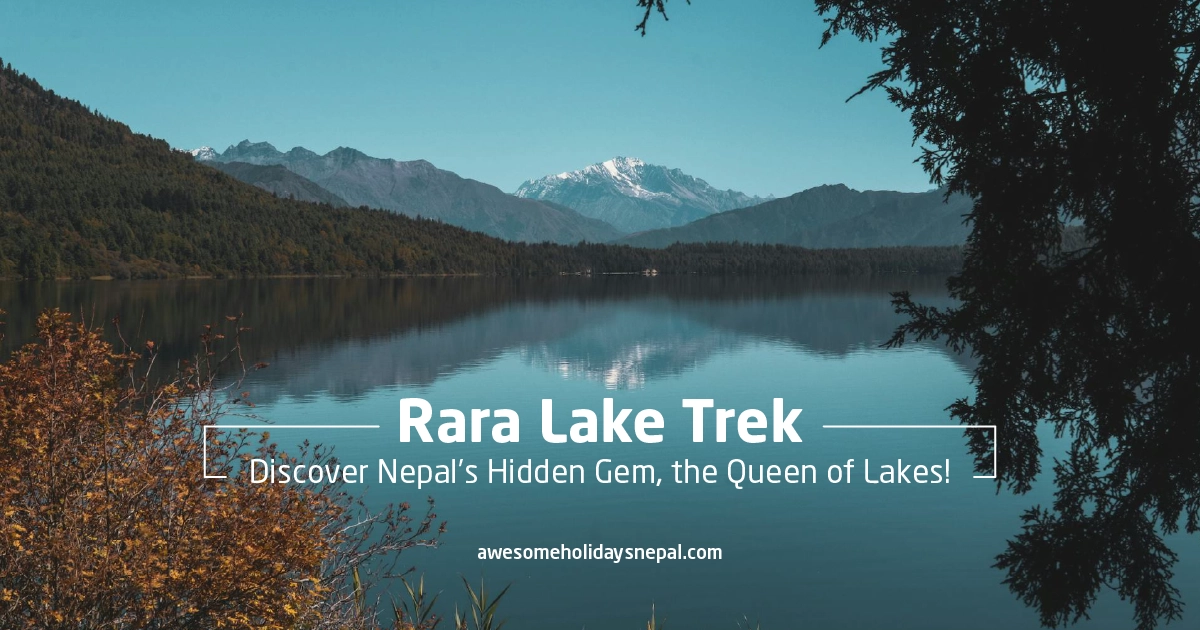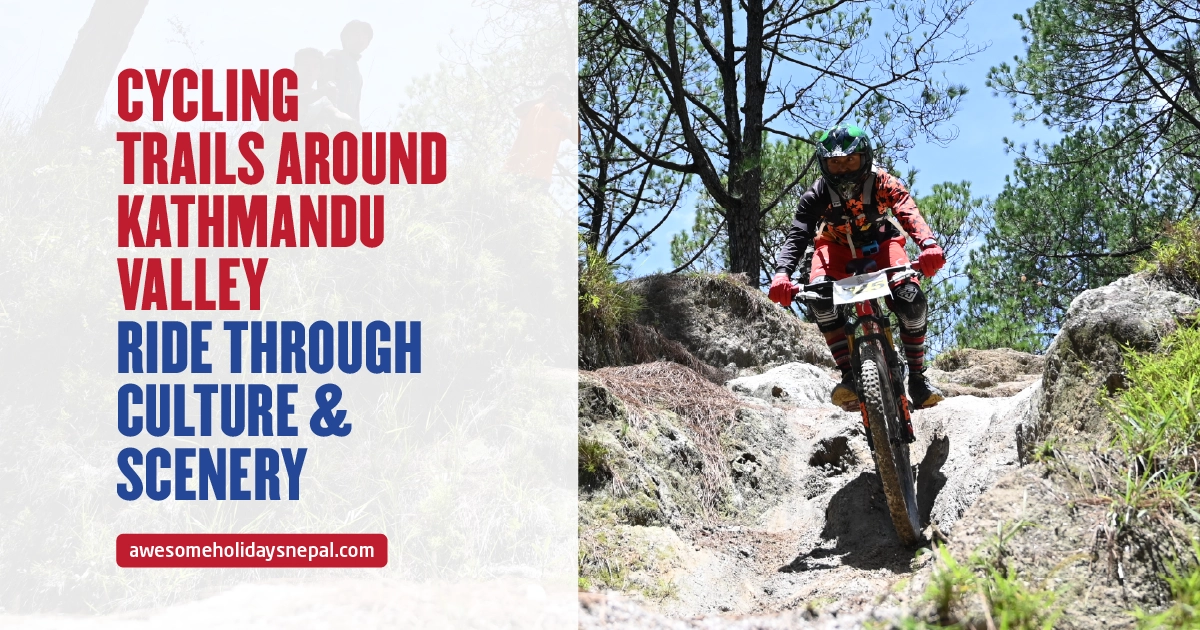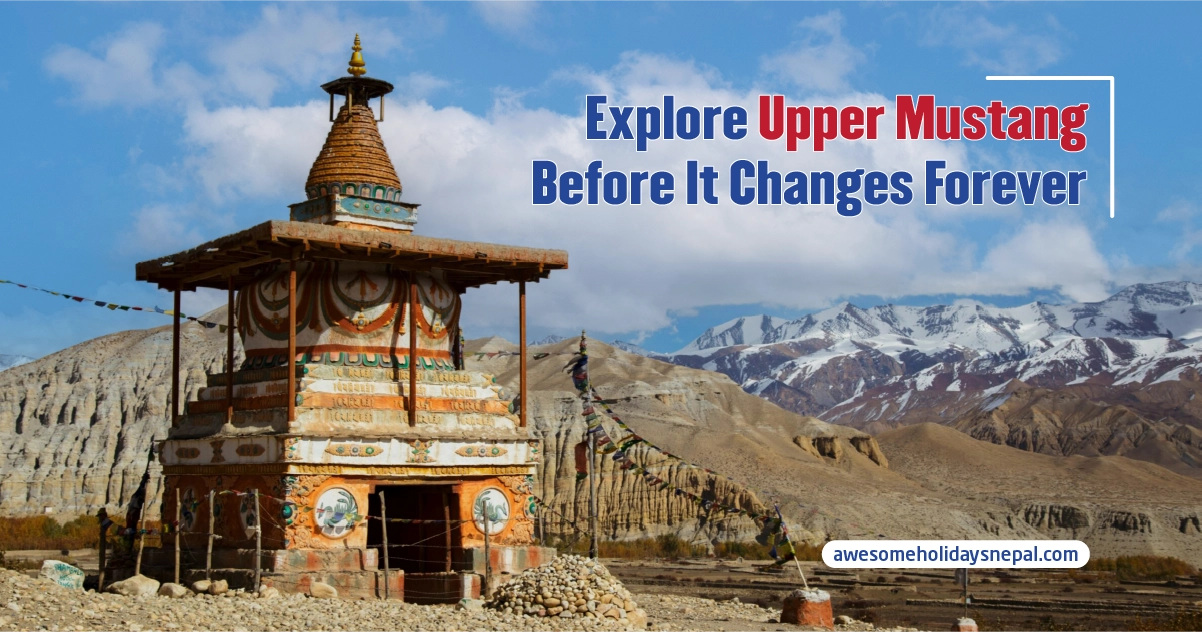Climbing Manaslu: The Mountain of Spirit
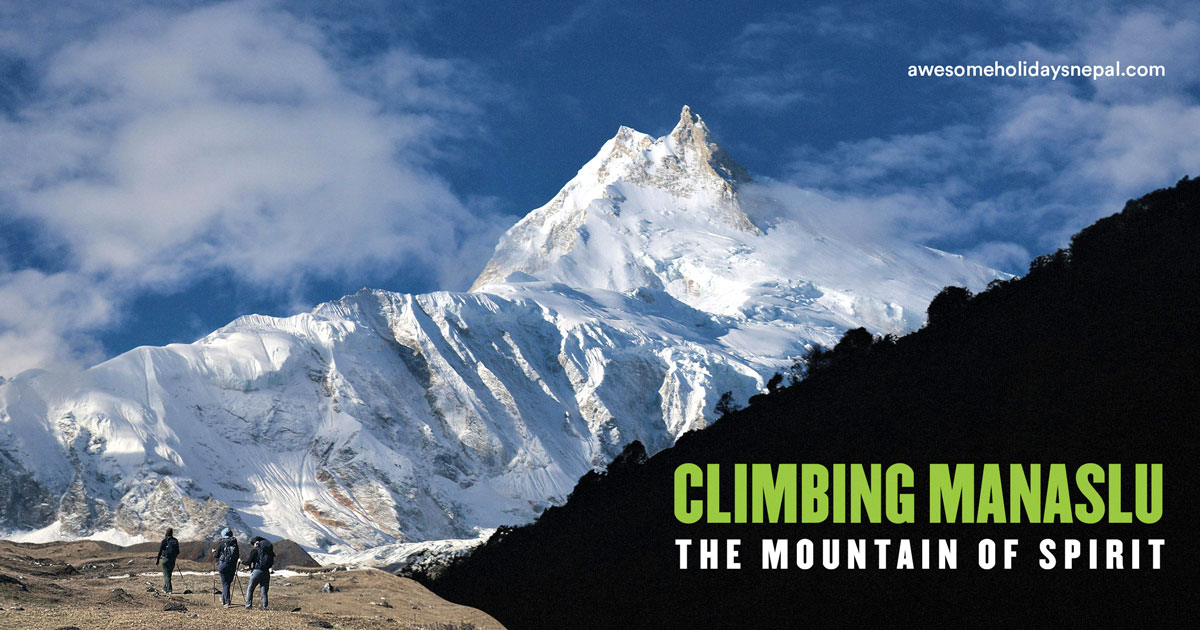
Every mountain expedition in Nepal is a different experience and a journey of its own. So is the adventure of climbing Manaslu!
The Majestic Manaslu expedition offers more than just a climb; it promises a journey into the heart of Nepal’s untamed wilderness, an ethereal beauty cloaked in snow and mystery. Ascending the Towering Summits of Mount Manaslu is considered one of the easy 8000-meter mountains, but still, it lies in the death zone.
Every mountain is challenging to climb. Before climbing Mount Everest, this is the last rock to climb, where you learn about the oxygen system, fixed lines, and climbing peaks. Though marked as one of the least technical and highly achievable 8,000 m peaks, Makalu is a great place to adjust how your body reacts at an extreme altitude.
Let’s break down what Manaslu trekking is like. But before that, let’s learn a little about the peak itself.
Why is Manaslu called the “Mountain of Spirit”?
Crowned as the ‘Mountain of the Spirit,’ Manaslu rises like a sentinel of serenity, beckoning adventurers to its icy realm. At an altitude of 8,163 m, Mount Manaslu is the 8th highest peak in the world. The giant peak lies in the Manasiri range of the Himalayas in the central-western part of Nepal.
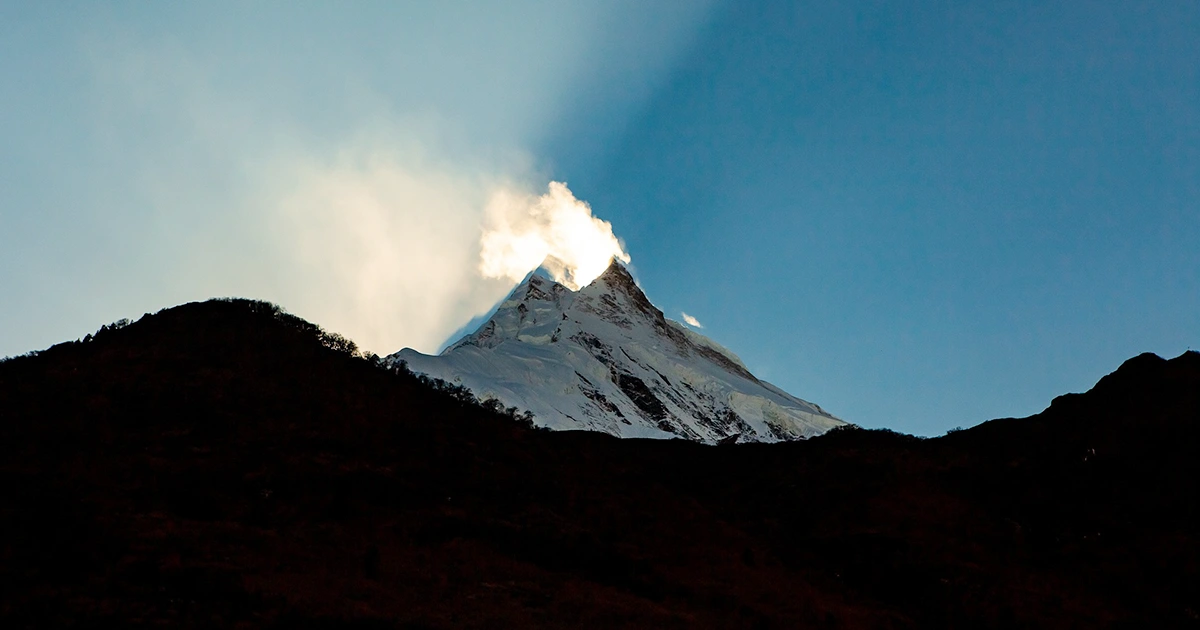
The name Manaslu comes from the Sanskrit word Manasa, which means soul. Hence, the mountain is known as the “Mountain of the Spirit.” At coordinates 28.5497° N and 84.5597° E, the neighboring Annapurna range lies to the west, and the Tibetan plateau lies to the north.
Manaslu Trekking: Why to Ascend Manaslu?
Unlike Everest, the Path to the snow-capped Giants of Manaslu is a less-traveled and less crowded route. Manaslu provides a great opportunity for a final ascent, and challenge yourself with the courage required for the expedition to higher peaks like Annapurna and Everest. Manaslu is a perfect training ground for anyone who is attempting to climb Mt. Everest.
The expedition provides breathtaking views that capture the stunning panoramic sights along the journey, and it offers deep exploration into one of the world’s most awe-inspiring regions. Climbing Manaslu is a dance with a harmonious balance between courage and caution at a knife’s edge.
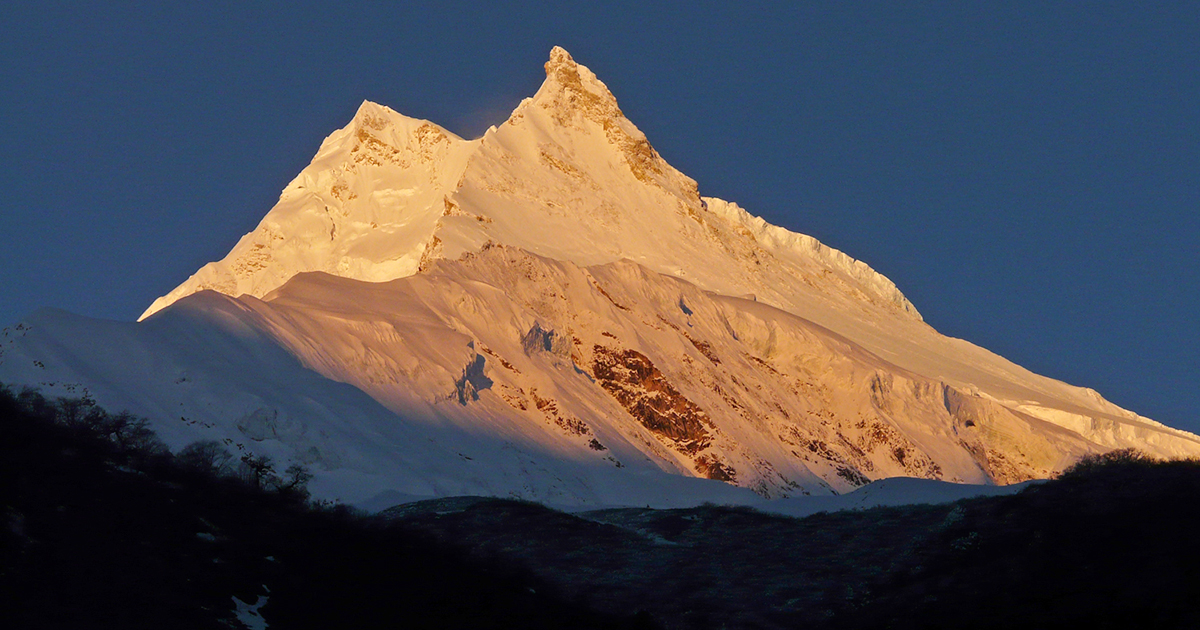
The Manaslu expedition is a test of endurance, where every step defies gravity and fatigue. The peak’s remote and rugged terrain highlights the mountain giant’s difficulty and isolation.
Cultural Experiences
The Manaslu region offers diverse religious, spiritual, and cultural immersion experiences with Tibetan Buddhist culture in villages like Samagaun, Jagat, and Lho. The unique festivals or traditions in the region make the area rich.
A spectacular trek through the Manaslu circuit takes you through waterfalls, high passes, and the ancient Tibetan-influenced villages of Samagoan. The trek also delivers a chance to walk the ancient salt routes and experience traditional ways of life in the villages.
Home to ancient monasteries, Manaslu is not just a mountain but a sanctuary of spirituality. The Sherpa and Gurung communities, with their eternal tales and fluttering flags of the Buddha prayer, tell the story of the hope and resilience of the people living there for centuries.
Manaslu Conservation Area
The Manaslu Conservation Area is home to alpine meadows, rhododendron forests, and glacial rivers. The MCA promotes, regulates, and conserves the area’s diverse biodiversity. The area is also a sanctuary for the elusive snow leopard and other flora and fauna along the trek.
Everything About Climbing Manaslu
Climbing Manaslu or any other peak requires a well-planned itinerary and months of physical and mental preparation. Whether researching the right season to ascend or booking your trip in advance, there are many things you need to sort out before beginning the trek.
First ascent of Manaslu
Four unsuccessful Japanese expeditions took place between 1950 and 1955 before the mountain was finally conquered by a Japanese expedition team led by Toshio Imanishi and Nepali climber Gyalzen Norbu Sherpa on May 9, 1956. They took the mountain’s crystal-white Northeast face with a moderately sloped ridge. This historical ascent established a strong connection between Japanese climbers and the mountain.
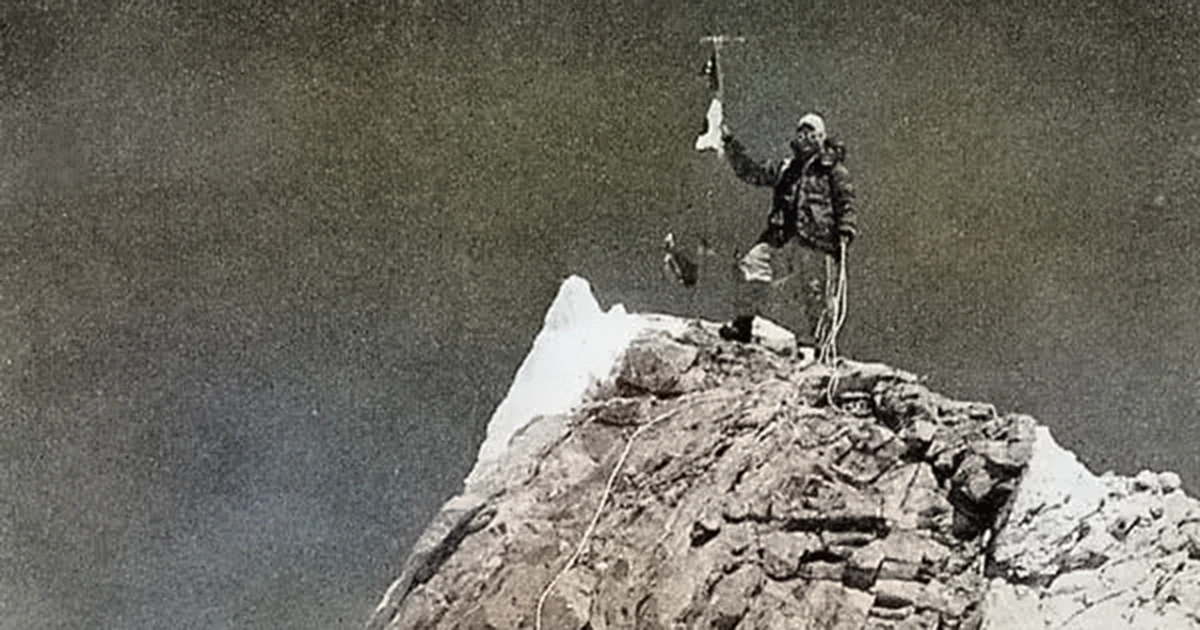
Over the years, Japan has remained an essential contributor to the expedition industry, as they perceived Manaslu as “their mountain.” Junko Tabei, the first woman to summit Everest, also became the first woman to summit Manaslu in 1984.
Best Time to Climb Manaslu
Choosing the right season is crucial for a successful expedition. Autumn and summer are the best seasons for climbing Mount Manaslu. These seasons are more favorable than others, with perfect weather, precipitation, temperature, and atmospheric pressure.
Spring (April-May) and Autumn (September-October) are ideal seasons for the expedition: spring (April, May) and autumn (October, November). Fixing the climbing ropes, ladders, and camps becomes more accessible in autumn.
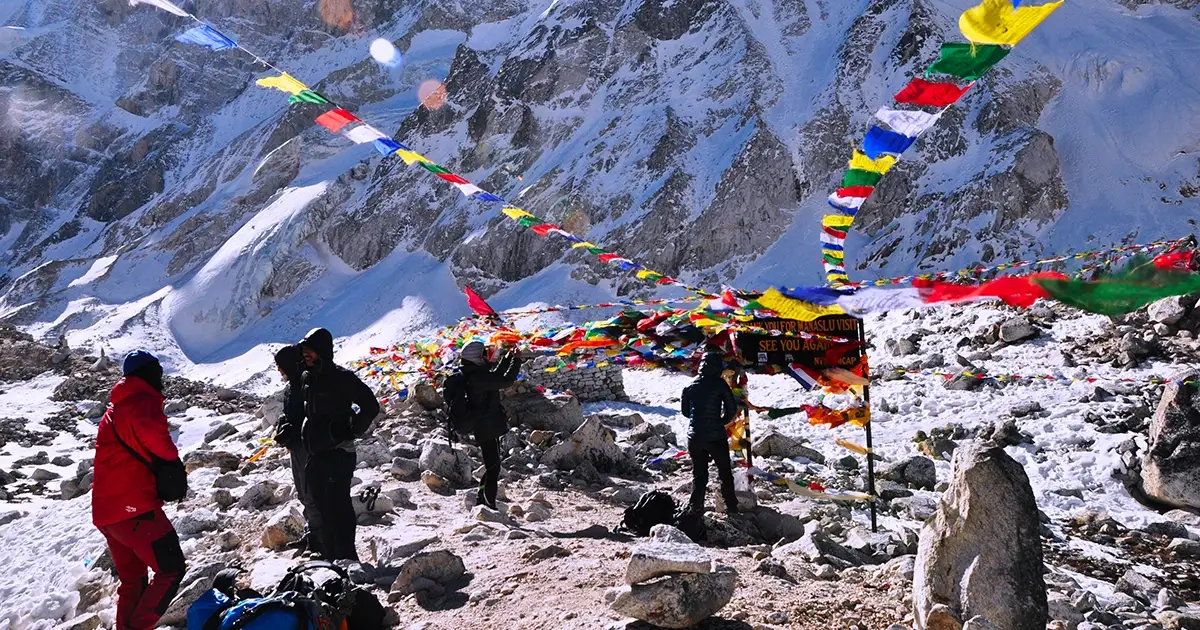
The temperature falls after the rainy season, and snow gets deposited at the higher peaks. Due to the thick deposit of snow, the rope fixing becomes easier. The success rate of summits is higher in the autumn season. The routes flourished with natural flowers to welcome to the peak.
Preparing for the Expedition
Preparing for a Manaslu expedition requires meticulous planning, physical preparation, and logistical coordination to ensure safety and success.
Physical and Mental Preparation
You must be physically and mentally prepared. Regular aerobic exercises such as running, cycling, and swimming are necessary to build stamina. Focus on muscle-strengthening training.
Go hiking or trekking at high altitudes (above 4,000 m) to familiarize yourself with thin air and avoid altitude sickness. It is better to climb smaller peaks such as Island Peak (6,189), Baruntse Peak (7,129 m), Spantik Peak (7,030 m), and Himlung Himal (7,126 m), prior ascents of 6,000-7,000 m peaks such as Denali, Aconcagua, Peak Lenin, or the Ecuador volcanoes are preferred. Knowing about Acute Mountain Sickness (AMS), HAPE, and HACE, their remedy and safety measures will help you in the mountains.
Technical Skills
Technical skills such as ice and rock climbing, crampon technique training, ice axe use, and rope management are crucial for glacier and snowfield navigation. Before heading to the mountain, get familiar with the gear and practice using expedition equipment like ascenders, harnesses, carabiners, and oxygen systems.
Mental Preparation
Practice mindfulness, meditation, and yoga to handle stress and unexpected situations that might be waiting for you at a high altitude. To simulate summit attempts, participate in lower-altitude climbs, rock climbing, or challenging treks.
Ensure your health before traveling to Nepal and ascending the Manaslu climb. You must be able to climb ice, snow, and rock terrain for multiple days in a row. Practice climbing heights with some load on your back. The weather and temperature in the high mountains are harsh. Above 8,000 m, your body starts dying. Make yourself resilient to exhaustion and low temperatures.
What to Pack: Essential Gears for Manaslu Expedition
Making a packing list for Manaslu is not much different from making a list for any other mountain above 8,000 m. One must consider the difficulty and temperature while making the list. Packing for a Manaslu expedition requires carefully selecting essential gear to ensure safety and efficiency in harsh conditions.
It’s freezing, windy, and difficult up in the mountains. Packing the right gear is crucial for a safe and successful climb. Gear and essentials can be divided into various categories, such as clothing, climbing gear, footwear, camping gear, hydration and nutrition, electronics, and other personal belongings.
High-altitude double-layer boots, a -30°C-rated sleeping bag, and an insulated down jacket are critical for protection against sub-zero temperatures. Climbing essentials like an ice axe, crampons, harnesses, helmets, and ropes are mandatory for tackling the technical terrain. Lightweight, weather-resistant tents and adequate oxygen cylinders are also necessary for overnight stays and summit attempts above 7,000 meters.
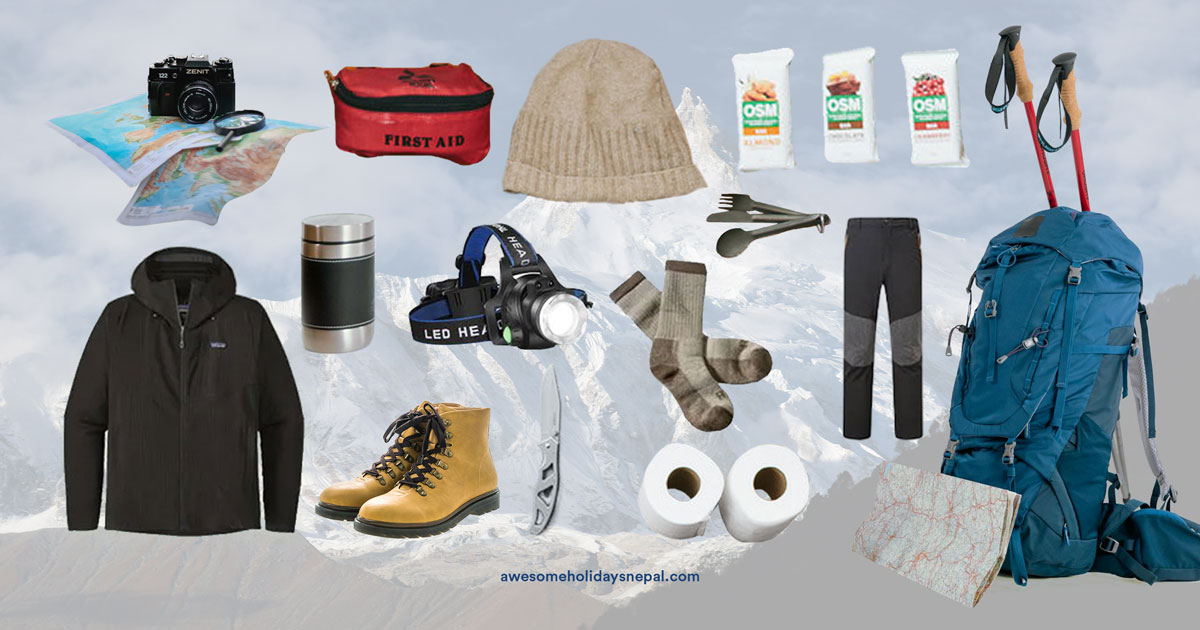
Safety and survival gear play a pivotal role in high-altitude expeditions. A comprehensive first aid kit, altitude sickness medications, and emergency communication devices like a satellite phone are indispensable. Hydration and nutrition must not be overlooked—insulated water bottles, high-calorie snacks, and energy bars help maintain strength and stamina.
Finally, remember to bring UV-protected sunglasses, sunscreen, and trekking poles to navigate snowy ridges while avoiding sun exposure.
Health and Safety Precautions
Hygiene is crucial to us, and we take many precautions to ensure our teams avoid getting sick at all costs. Despite this, illness can be a fact of life in the Himalayas, so chances are people will at least experience a stomach rumbling at some point during the expedition.
Stay focused on sanitation to minimize illness. Be careful eating undercooked foods, and always have a bottle of hand sanitizer with you that you use religiously after going to the toilet and shaking hands. Drink bottled or boiled water where you can.
Permits and Regulations for the Expedition
Climbing Manaslu requires several permits, as the mountain lies in Nepal’s restricted area. The most important is the Manaslu Conservation Area Permit (MCAP), which allows entry into the conservation zone. The peak lies completely within Nepal. You do not need to get permits from Tibet.
Other Required Permits:
● Restricted Area Permit (RAP): Issued by the Department of Immigration.
● Climbing Permit Issued by the Nepal Mountaineering Association (NMA).
● Hire a licensed liaison officer for the expedition.
● Partner with a government-authorized trekking agency.
● Follow waste management guidelines and carry out all trash.
● Respect the “Leave No Trace” principles to protect the environment.
● Respect local cultural customs and traditions throughout the trek.
● Carry valid personal identification and proof of permits at all times.
● Ensure proper insurance coverage for climbing and emergency evacuation.
Challenges and Risks
Manaslu has claimed numerous lives due to its inherent dangers. The unpredictable weather and rapidly changing weather conditions, including heavy snowfall, strong winds, and avalanches, make the expedition highly risky.
The unstable glaciers, icefalls, crevasses, and steep rock-and-ice sections test the climbers’ technical abilities. The risk of high-altitude sicknesses like Acute Mountain Sickness (AMS), HAPE, and HACE are the common risks that require careful acclimatization and monitoring.
Safety Precautions
Methodical acclimatization is a structured plan to adapt to an altitude that reduces the risk of sickness and enhances resilience and performance. The expedition team will carry rescue gear, oxygen bottles, and emergency first-aid kits. In the high mountains, the experienced guides and Sherpas are your friends. Get to know each other for good communication.
The Sherpa’s contributions are the most prominent in the expedition. Sherpa guides ensure the safety and success of climbers, often putting themselves at immense risk. They fix ropes, carry heavy loads, establish camps, and guide climbers through treacherous terrain. You might have heard the legendary Sherpa stories of dedication, rescuing climbers in extreme situations, and leading successful summits against all odds.
The team of skilled professionals will provide you with safety instructions, logistical support, and constant monitoring of climbers’ health and progress. The expedition team will arrange porters and mules to carry essential equipment, reducing the physical burden on climbers.
Manaslu Summit Controversy
The Manaslu summit controversy refers to disputes about whether climbers truly reach the actual summit of Manaslu (8,163 meters), the eighth-highest mountain in the world. This controversy has sparked significant debate in the climbing community over the past few years, primarily because of misconceptions about the true summit point and claims of successful summits.
Manaslu’s true summit is a small, exposed point at 8,163 meters. There is a dispute about whether climbers truly reached the highest point or just stopped at the fore-summit or a lower point. The fore-summit is only a few meters (20-25 m) lower in altitude but is less dangerous than the true summit.
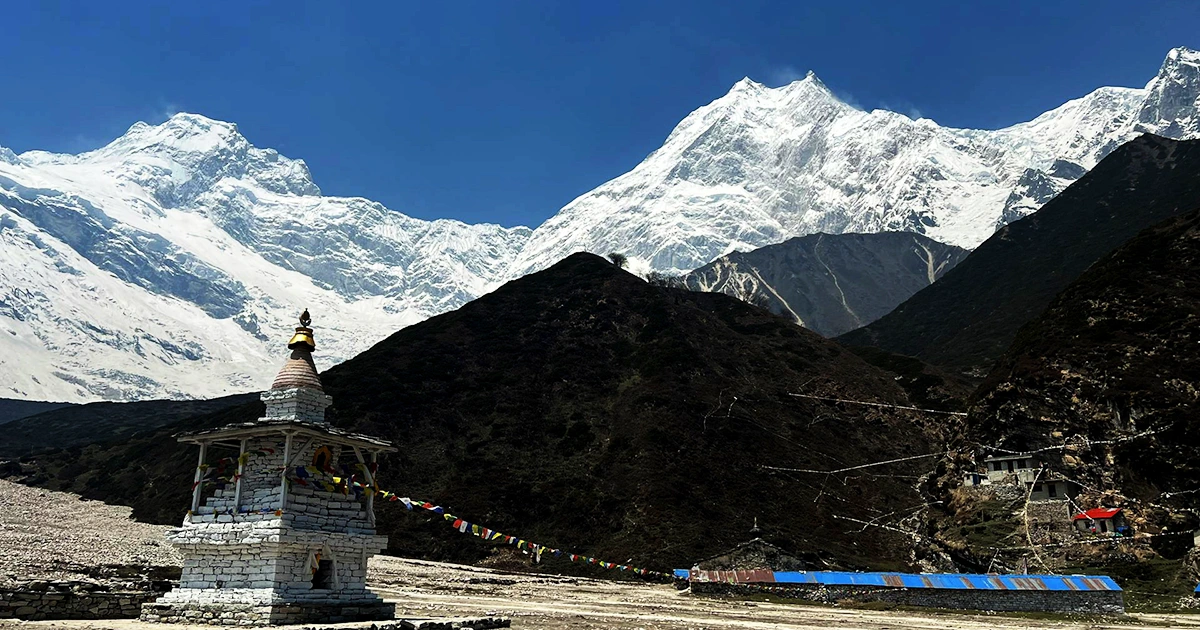
With the development of technology, GPS tracking systems, drone shots, and high-resolution cameras have allowed for better documentation. In 2019, Nirmal Purja and Stefi Troguet were among those who claimed to have reached the actual summit of Manaslu. This gave rise to the debate about whether the previous climbers stopped at a col (a pass between two mountain peaks) and had not reached the true highest point on the summit.
For decades, climbers and guiding companies have reported successful summits when, in reality, they only reached the fore-summit. This has raised concerns about the authenticity of summit records. The final ridge to the true summit is highly technical and dangerous, with a narrow cornice that could collapse underfoot.
Summarizing the Manaslu Expedition
Manaslu is more than a destination; it’s a journey of discovery, perseverance, and the indomitable human spirit. Those who dare to dream big will find their spirits soaring as high as the peaks themselves. The Manaslu expedition is a remarkable journey that combines thrilling challenges, breathtaking landscapes, and a deep connection to Himalayan culture.
With its technical terrain, unpredictable weather, and the ever-present risks of high-altitude climbing, it tests both physical endurance and mental strength. However, with proper preparation, experienced Sherpa support, and a commitment to safety, the rewards of standing on this majestic summit are unmatched.
Whether you’re seeking adventure, solitude, or a personal triumph, Manaslu offers an experience that will stay with you forever.
FAQs
Expand AllWhat are the permits required for Manaslu circuit trek?
To trek the Manaslu Circuit, you need three key permits in addition to the TIMS (Trekkers’ Information Management System) card. These include the Manaslu Conservation Area Permit (MCAP), the Annapurna Conservation Area Permit (ACAP), and the Manaslu Restricted Area Permit. However, Nepali citizens are exempt from the restricted area permit. If you plan to explore the Tsum Valley, you must also obtain the Tsum Valley Restricted Area Permit.
Why is Manaslu Circuit Trek a better choice?
Manaslu is the 8th highest mountain in the world and the circuit trek offers peaceful off-the-beaten-path adventure. Unlike other commercialized trekking routes like ABC or EBC, this trekking route offers a genuine cultural experience.
When was the first time Mt. Manaslu climbed?
On May 9, 1956, A.D. , Toshio Imanishi and Gyalzen Norbu climbed Mount Manaslu for the first time.
Is a trekking guide mandatory for the Manaslu Circuit Trek?
Yes, the Manaslu Circuit trek is classified as a restricted trekking zone. So, you need to hire a government registered trekking guide. The permit is provided for a minimum of two people for your safety.
Who is the youngest person to climb Mount Manaslu?
Mingma David Sherpa climbed Mount Manaslu at the age of 17 in 2012 AD.
How long does the Manaslu expedition take?
The expedition usually takes around 35 to 45 days, including trekking to base camp, acclimatization, climbing rotations, and summit push.
What’s the ideal time of year to do the Manaslu Circuit Trek?
The optimal trekking seasons are autumn (mid-September to November) and spring (March to June). These months offer the best weather and scenic beauty. While the trek is possible year-round, it’s advisable to avoid the monsoon and prepare for harsh conditions if trekking in winter.
What is the starting and ending point of the Manaslu circuit trek?
Generally, the 13-day Manaslu Circuit Trek starts at Macha Khola and ends at Besisahar. The trekking can be made longer with the addition of Tsum Valley trek.
Which month offers the clearest views at the Manaslu Circuit?
October is widely regarded as the best month for clear skies and stunning mountain views along the Manaslu Circuit.
Related blog posts
Discover a choice of tourist destinations loved by most of our visitors. Whether you're on a jungle safari to spot rare animals or walking through a world heritage site, these well-planned itineraries cover the major highlights of Nepal.


